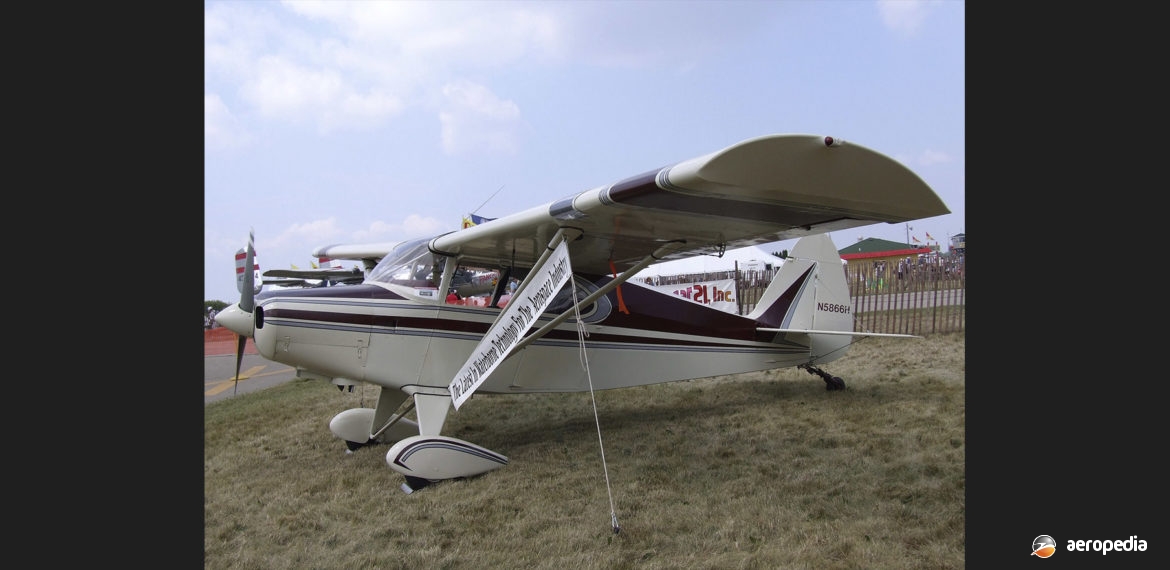Photograph:
Piper PA-16 Clipper N5866H at Oshkosh, Wisconsin, USA in July 2007 (David C Eyre)
Country of origin:
United States of America
Description:
Four seat light sport monoplane
Power Plant:
One 86 kw (115 hp) Lycoming O-235-C1 four-cylinder horizontally-opposed air-cooled engine
Specifications:
- Wingspan: 8.9 m (29 ft 2 in)
- Length: 6.12 m (20 ft 1 in)
- Height: 1.88 m (6 ft 2 in)
- Wing area: 13.65 m² (147 sq ft)
- Max speed: 201 km/h (125 mph)
- Cruising speed at 75% power: 156 km/h (97 mph)
- Stalling speed: 80 km/h (50 mph)
- Rate of climb at sea level: 183 m/min (600 ft/min)
- Service ceiling: 3,353 m (11,000 ft)
- Range with reserves: 772 km (480 miles)
- Take-off run: 219 m (720 ft)
- Fuel capacity: 114 litres (25 Imp gals)
- Take-off roll: 219 m (720 ft)
- Landing roll: 183 m (600 ft)
- Empty weight: 386 kg (850 lb)
- Baggage capacity: 23 kg (50 lb)
- Useful load: 363 kg (800 lb)
- Loaded weight: 748 kg (1,650 lb)
History:
The PA-16 was a development of the PA-15 Vagabond, being a stretched and refined variant to seat four, having an extra fuel tank, and other refinements. Production only proceeded for one year. Power was provided by a Lycoming O-235 four-cylinder engine. The aircraft was described as seating four but in fact owners have described it, with the power available, as a 2 + 2 type aircraft. The prototype NX4000H (c/n 16-01) was completed in January 1948. After a redesigned wing was fitted the construction number was changed to 16-1 and Type Approval was granted on 18 October that year.
In 1947 aircraft built by Piper were not selling well and Piper created the PA-16 using as many parts as possible from the Vagabond, which essentially was a two-seat side-by-side development of the Cub. Originally known as the Clipper, Pan American Airlines, which used that name to describe its airliners, objected to the use of the name Clipper and so production of the Clipper ceased after one year when 736 examples had been completed. Due to pressure, Piper re-designed the aircraft, installing wing flaps, extra fuel tanks, control sticks and yokes, and a 93 kw (125 hp) O-290 Lycoming engine, and this became the PA-20 Pacer.
At least one example of the type has been imported to Australia, this aircraf having been removed from the US Civil Register on 28 February 1990. This aircraft was built in 1949 and on arrival in Australia underwent a complete restoration, including stripping, sandblasting, etch priming and painting, the wings and fuselage all being recovered in fabric. However, before completion it was noted in 2010 for sale. It eventually became 24-7784 (c/n 16-486 – ex N5867H) under RAA regulations on 18 February 2011.

